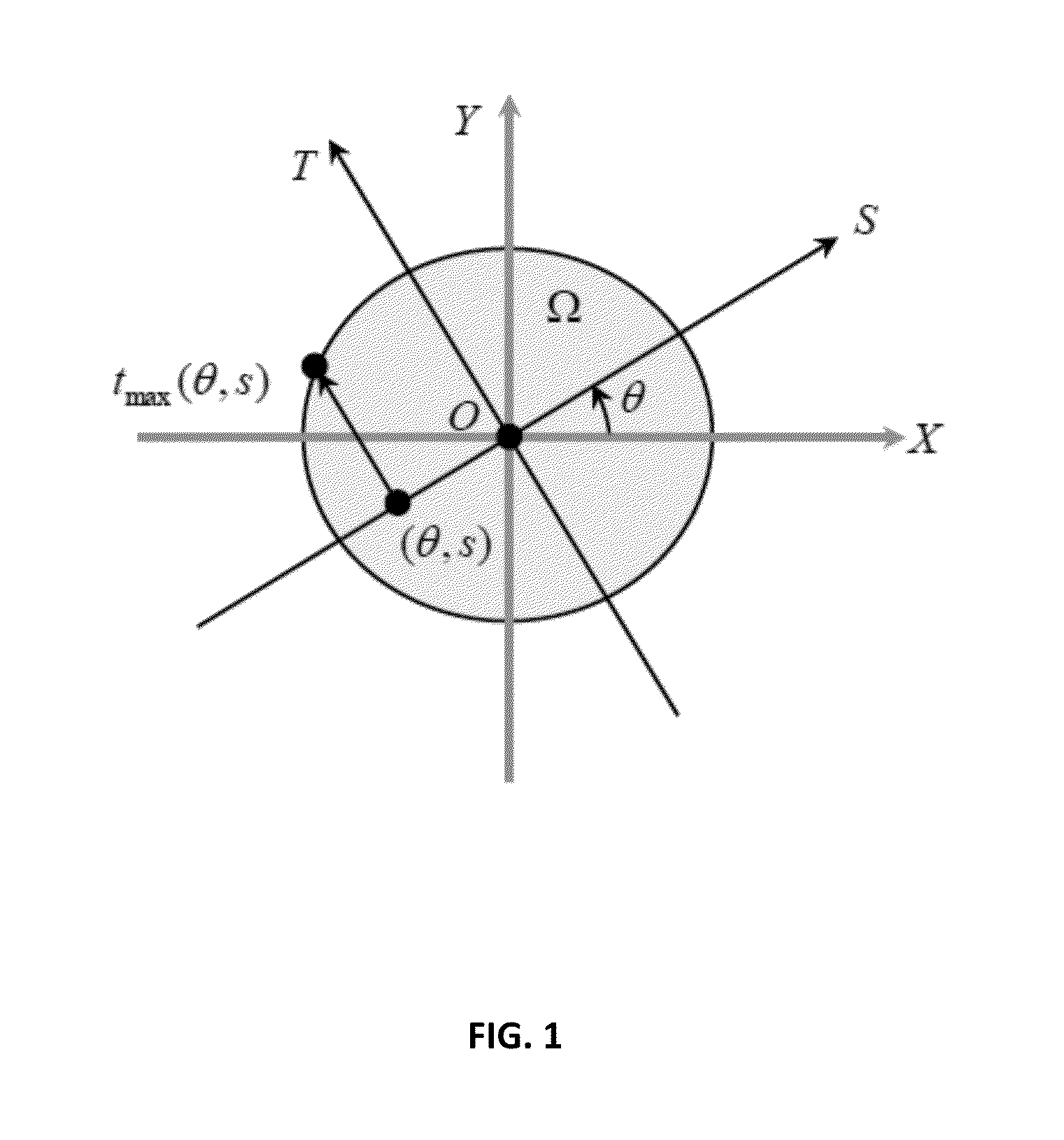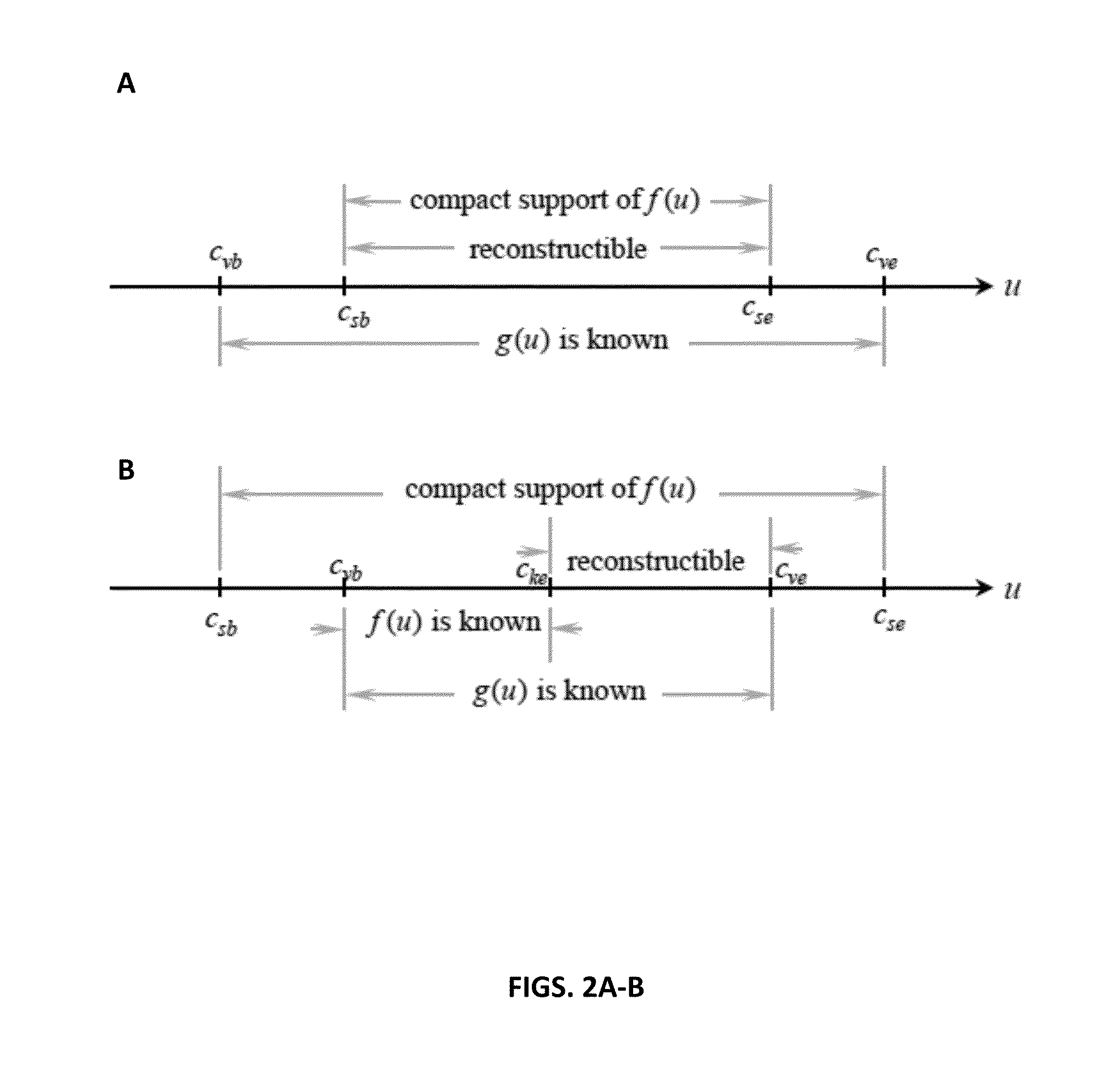Methods for improved single photon emission computed tomography using exact and stable region of interest reconstructions
a computed tomography and region reconstruction technology, applied in tomography, instruments, diagnostic recording/measure, etc., can solve the problems of insufficient development of reliable diagnosis and therapy, cumbersome reconstruction of key subject areas such as the heart, lung, head and neck, etc., to and improve the accuracy of image prediction
- Summary
- Abstract
- Description
- Claims
- Application Information
AI Technical Summary
Benefits of technology
Problems solved by technology
Method used
Image
Examples
example 1
[0368]To verify and showcase the inventive interior reconstruction for SPECT of the present invention, we performed several numerical tests. In our simulation, a modified Shepp-Logan phantom of SPECT version was employed inside a circular support Ω of radius 10 cm. As shown in FIG. 6A, the phantom consists of 10 ellipses whose parameters are the same as that given by Noo et al. We assumed that a uniform attenuation coefficient μ0 throughout the whole support of the phantom. In parallel-beam geometry, 360 view angles were uniformly sampled for an angle range [0,π]. For each view-angle, there were totally 600 detector elements uniformly distributed along a 20 cm linear detector array. For different attenuation coefficients μ0 (0.0 cm−1, 0.15 cm−1, 0.30 cm−1), we analytically computed non-truncated projection datasets. Hence, the backprojection of differential data can be easily calculated at any point to simulate different fields of view (FOVs). Without loss of generality, here we ass...
example 2
[0369]To verify our theoretical findings obtained in the present invention, we developed a HOT minimization based interior SPECT algorithm in an iterative framework. This algorithm is a modification of our previously reported HOT minimization based on an interior tomography algorithm. One difference between this algorithm and previous algorithms lies in the formulations for the steepest gradient of HOT and the ordered-subset simultaneous algebraic reconstruction technique (OS-SART). Let ƒu,v=ƒ(uΔ,vΔ) be a digital image reconstructed from the available local projections, where Δ represents the sampling interval, u and v are integers. To demonstrate the computation for the steepest gradient direction, here we use the piecewise-linear case as an example. From the definition of HOT2,
[0370]HOT2=∑i=1m∑j>i,j∈Ni∫Γi,jfi-fjⅆs+∫Ωamin{∑r=02(∂2f∂x1r∂x22-r)2,(∂f∂x1)2+(∂f∂x2)2}ⅆx,EQUATION136
[0371]which consists of the terms for characterizing discontinuities between neighboring r...
PUM
 Login to View More
Login to View More Abstract
Description
Claims
Application Information
 Login to View More
Login to View More - R&D
- Intellectual Property
- Life Sciences
- Materials
- Tech Scout
- Unparalleled Data Quality
- Higher Quality Content
- 60% Fewer Hallucinations
Browse by: Latest US Patents, China's latest patents, Technical Efficacy Thesaurus, Application Domain, Technology Topic, Popular Technical Reports.
© 2025 PatSnap. All rights reserved.Legal|Privacy policy|Modern Slavery Act Transparency Statement|Sitemap|About US| Contact US: help@patsnap.com



